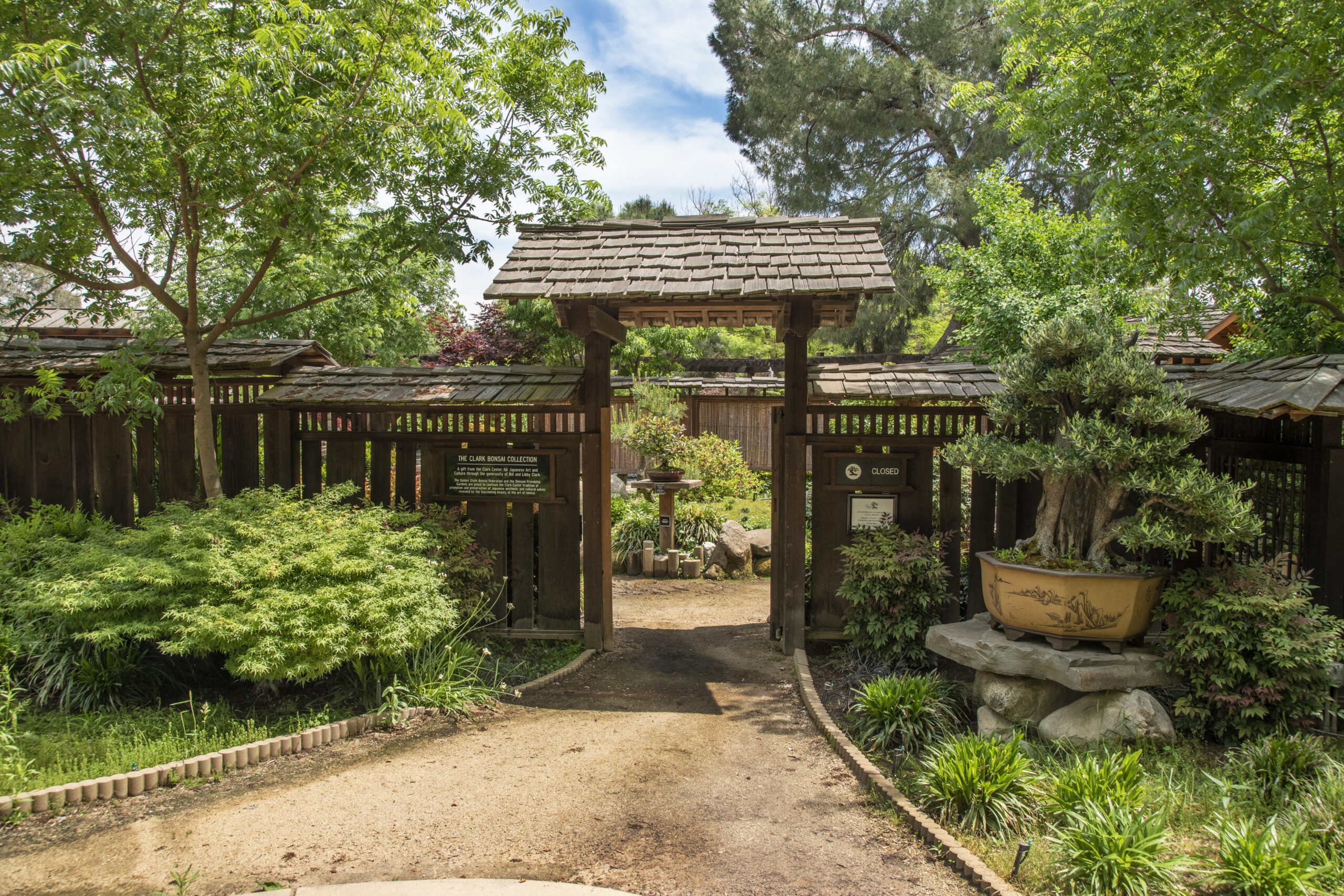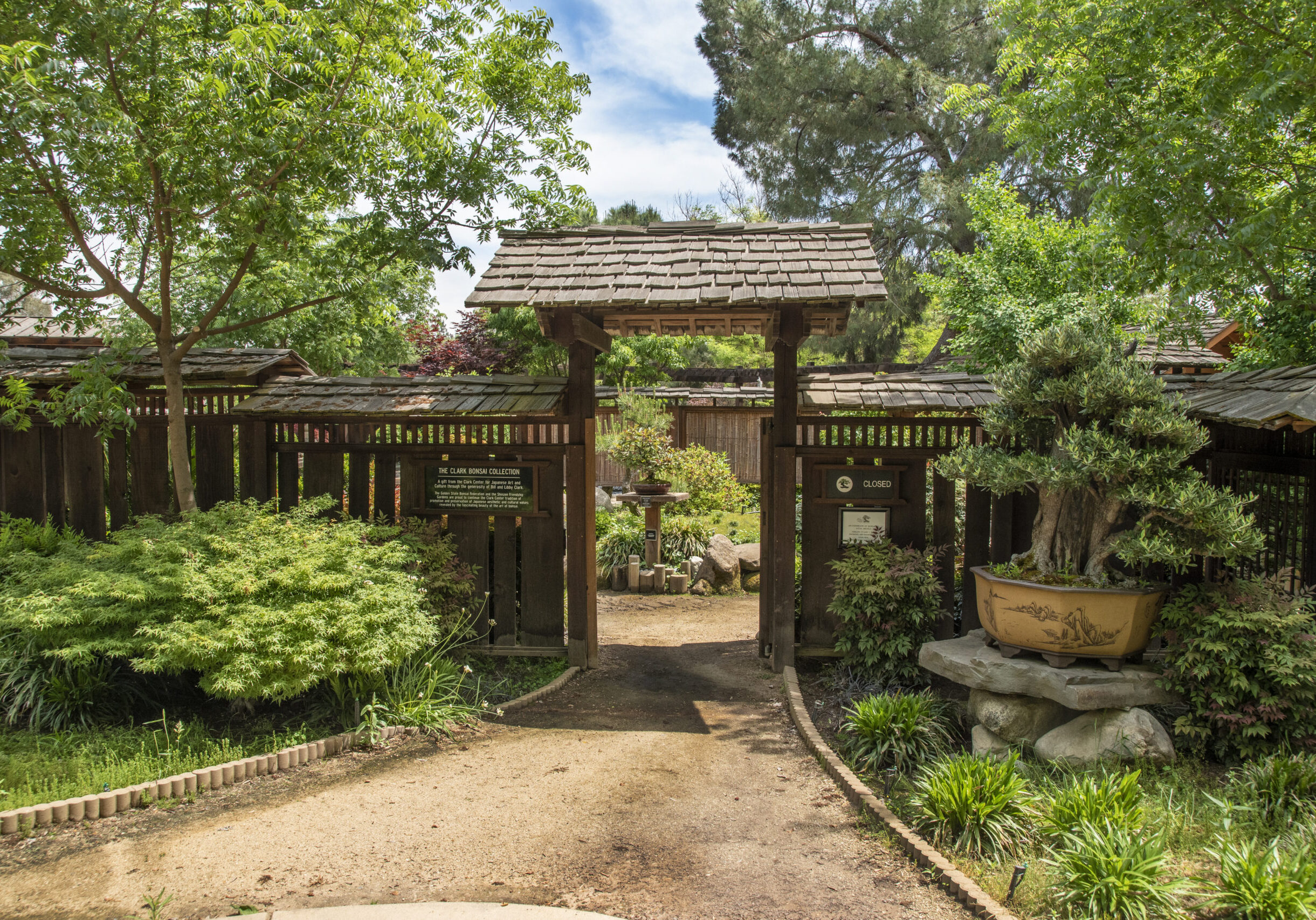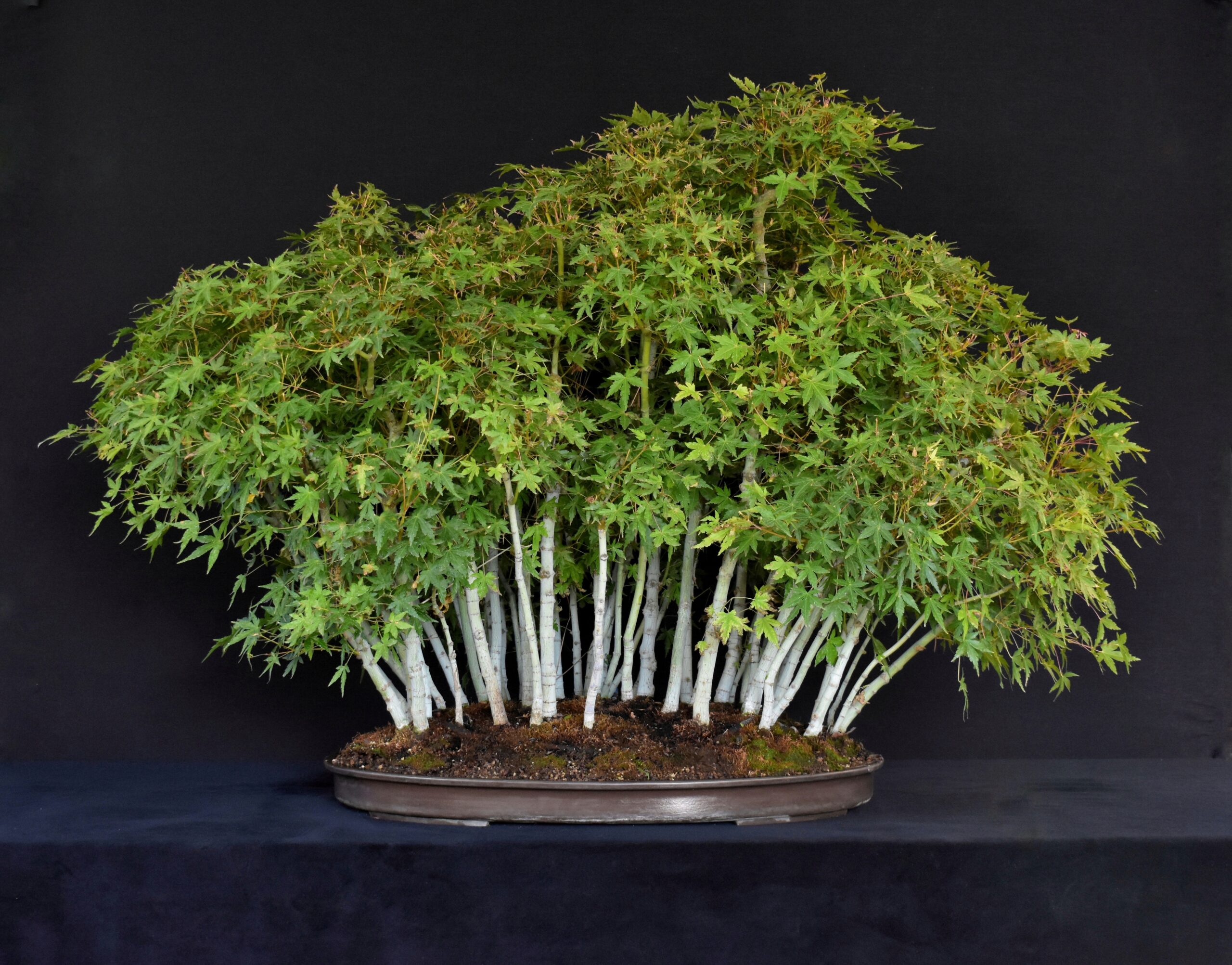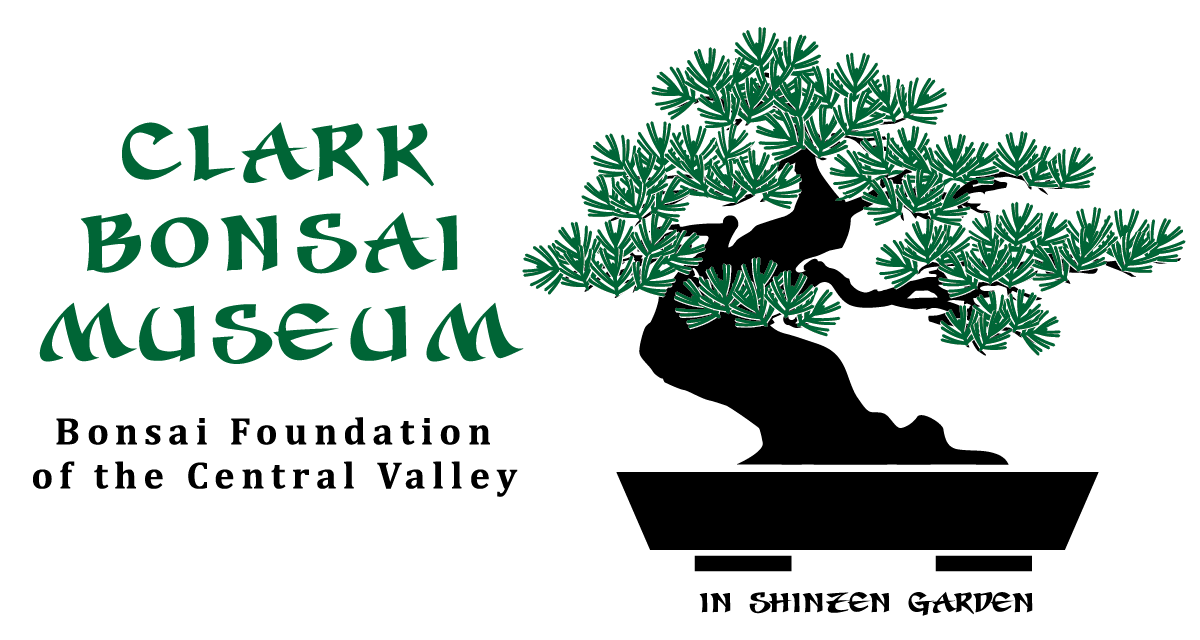10th Anniversary Exhibition
Celebrating the Evolution of a Bonsai Collection.
Welcome to the 10th Anniversary Bonsai Exhibition at Shinzen Japanese Friendship Gardens, where tradition and art, culture, and history unite in a display of natural beauty.
We are celebrating a nationally recognized bonsai collection that presents unique and
remarkable bonsai specimens, each telling the story of its creation, the natural world its image evokes, and reverence for the art it represents. They invite us to experience the delicate balance between human creativity and the need to interpret the world around us.
As you explore the exhibit, you will encounter a diverse array of species, styles, and stories. Each bonsai reflects its grower's vision and dedication. From the majestic pines shaped over decades to intricate maples with vibrant seasonal colors, every tree stands as a testament to the harmony of form, scale, and spirit. Whether you are a seasoned enthusiast or a newcomer to the world of bonsai, we invite you to experience the tranquility, inspiration, and beauty that these living works of art provide.
Let this exhibition deepen your appreciation for the timeless tradition and innovative expressions found in the art of Bonsai.

Wild Thing Exhibit


Ranked one of the best public bonsai collections!

The Duality of Manga and Nanga Bonsai in Meiji Japan - January – March 2026, Conley Art, California State University, Fresno
Discover how Japan’s Meiji-era artists bridged traditional Nanga painting with emerging modern expression through the living art of bonsai. This exhibition explores the balance of duality—nature and imagination, discipline and freedom.
Look out for more exhibit details coming soon
TOURING EXHIBIT
John Naka Memorial Bonsai Exhibition August 2026 – Japanese Cultural Center George J. Doizak Gallery, Downtown Los Angeles
A tribute to the master who shaped bonsai in the West, this exhibition highlights John Naka’s life, vision, and timeless contributions to the art form.
Details on this special memorial exhibit coming soon.
TOURING EXHIBIT
More Learning
Future Exhibits in The Clark Bonsai Museum

Four Seasons: A Showcase of Deciduous
June of 2026 to Oct. 2026
As living artifacts, bonsai occupy a three-dimensional space, height, width, and depth, but the art of Bonsai also involves the dimension of time. In bonsai, the concept of time has three expressions: the tree’s true age according to when it sprouted. How long has it been a bonsai, that is, the time elapsed since its creation, the age the tree aesthetically represents, and finally, the generational aspect of an entity that exceeds a lifespan longer than our own.

March of 2026 to June of 2026
Explore the style of yose-ue and other multiple-trunk techniques, where trees are planted together to represent landscapes in miniature form. These works offer a glimpse into the lilliputian world, of peaceful maple and elm groves to towering conifers and striking mountain views.

Journey to the Fourth Dimension: The Element of Time
June of 2026 to Oct. 2026
As living artifacts, bonsai occupy a three-dimensional space, height, width, and depth, but the art of Bonsai also involves the dimension of time. In bonsai, the concept of time has three expressions: the tree’s true age according to when it sprouted. How long has it been a bonsai, that is, the time elapsed since its creation, the age the tree aesthetically represents, and finally, the generational aspect of an entity that exceeds a lifespan longer than our own.

Museum location
Clark Bonsai Museum
114 W Audubon Dr
Fresno, CA 93720
We would love to hear from you.
Hands On Learning

Hands-On Bonsai Classes: Interactive Learning (First Saturday Each Month, reservations recommended, fee involved)

Bonsai Team Building Workshops (reservations required, fee involved)

Seasonal Festivals and Special Events
- Jan – Shogatsu, New Year’s Decorations, Games, Activities (Dec. 31- Jan. 4)
- 19 - Day of Remembrance of Japanese Internment
- May – World Bonsai Day*
- 6, 9 – Hiroshima and Nagasaki Commemoration
- – Annual Anniversary Celebration*
- – Annual Christmas Cookie Exchange*
*dates to be announced
The Clark Bonsai Museum’s exhibitions weave together art, science, history, and the restorative touch of nature. Visitors are invited to wander its pathways throughout the year, discovering new perspectives with each return. Whether you seek the serenity of ancient trees, the thrill of contemporary creativity, or the joy of hands-on engagement, the museum’s ever-changing schedule of Programs ensures there’s always something extraordinary to see and experience.
